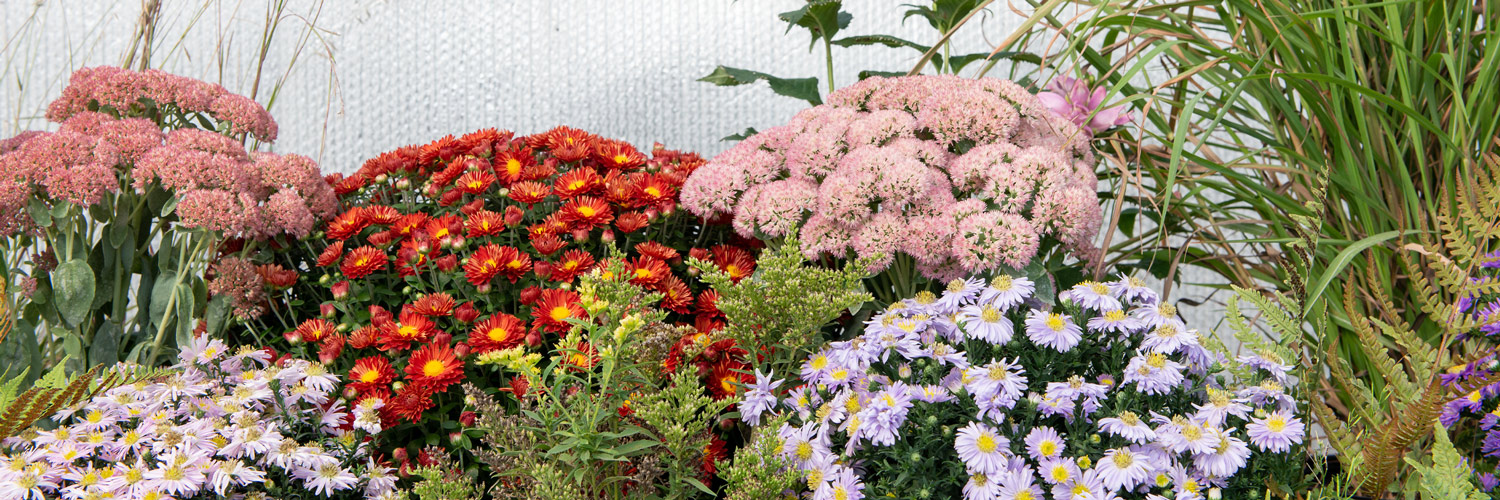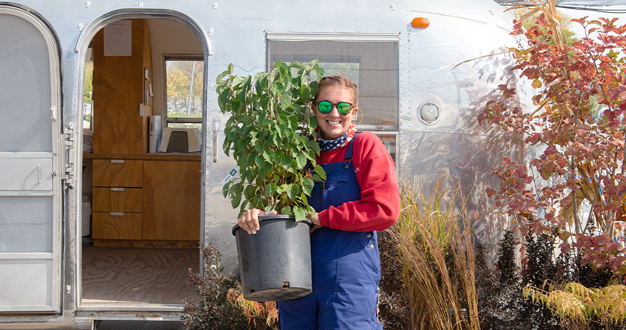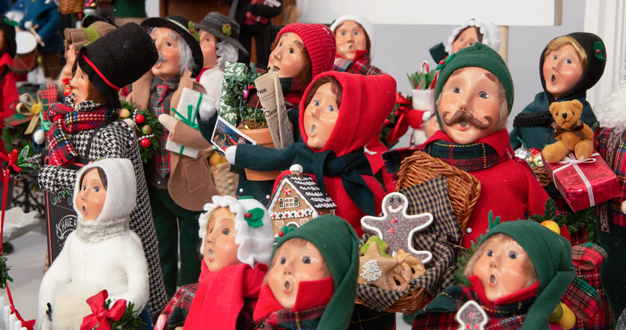
As the growing season begins to wrap up in late summer and early fall, some perennials boldly step forward to take their turn in the spotlight. From prolific bloomers to nodding grasses and brilliant foliage plants, here are a few stars in the fall landscape that we like the best.
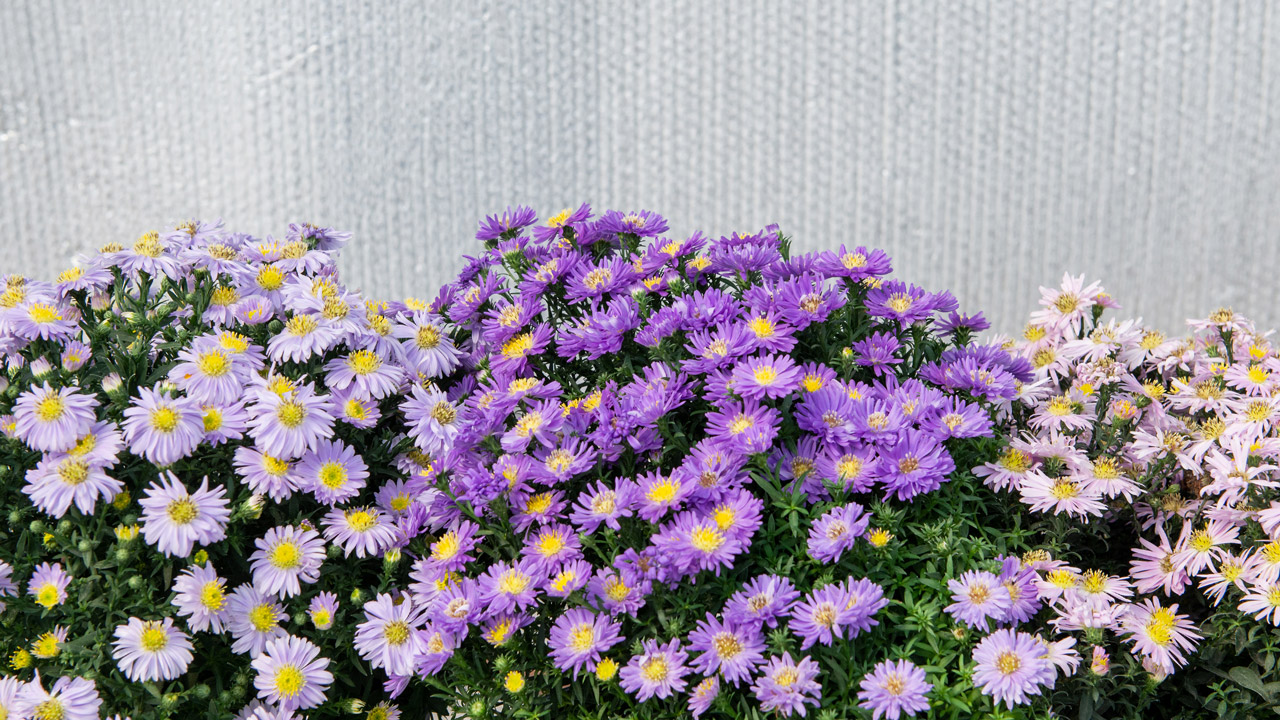
Perennial Aster // Aster novae-angliae Kickin Series
If you love butterflies, then you need asters in your landscape. Sweet daisy blooms in cotton candy colors cover neat mounds of finely textured foliage – and attract droves of butterflies in late-summer making it a perfect addition for any pollinator garden. Depending on the cultivar, flower color can range from cornflower blue to magenta to pastel pink. In the garden, asters have a charmingly informal look that fits perfectly into cottage gardens and perennial beds along with goldenrod, coneflower, and native grasses. Or define the border of a mixed bed with a tidy, colorful row of asters from the Kickin series. These densely compact varieties stay just a couple feet tall with dense foliage all the way to the ground – perfect for the front of the bed.
Perennial asters love full sun and consistent soil moisture. To increase branching and blooming, pinch them back periodically as they grow through the spring – but stop in early July to allow the flower buds to form.
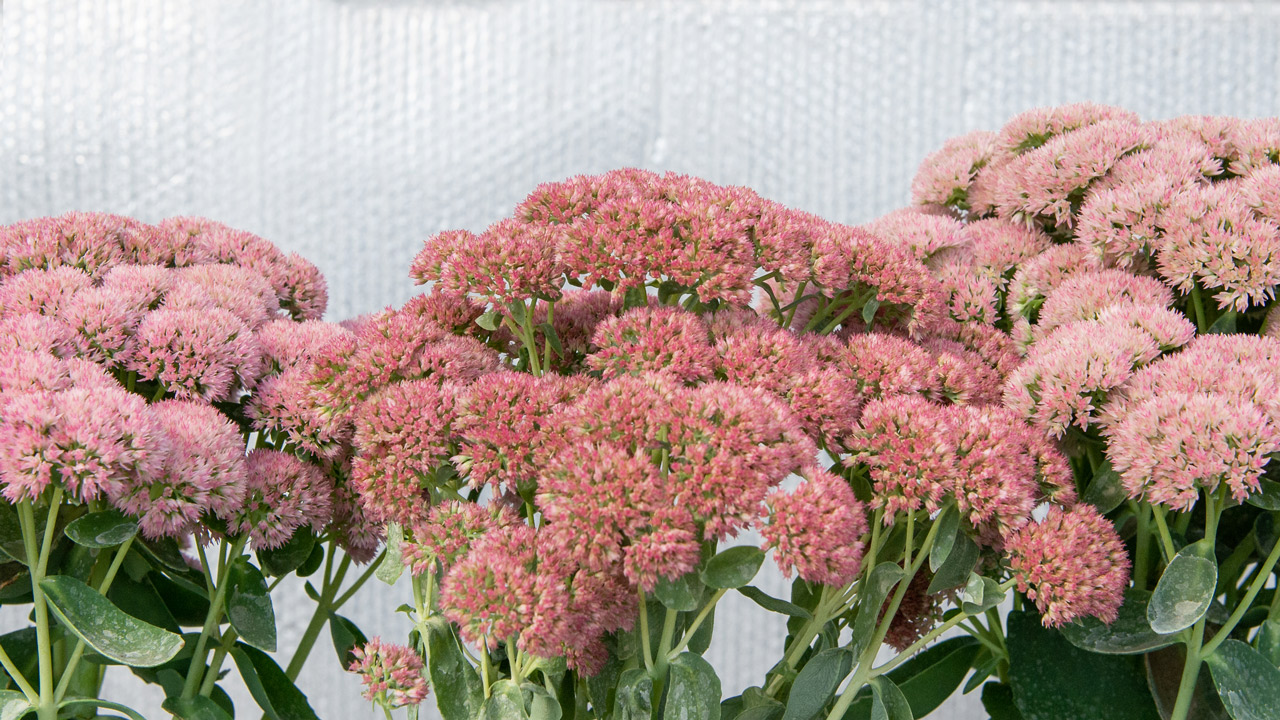
Sedum ‘Autumn Fire’ // Sedum spectabile ‘Autumn Fire’
Another butterfly magnet for your late-summer garden is upright sedum – we like Sedum ‘Autumn Fire.’ This cultivar forms clouds of densely packed blooms on tall stems with succulent, sage-green foliage. As they develop, the tiny, star-shaped flowers put on an evolving color show starting with green buds, then moving through shades of pink, mauve, and brick red until finally maturing to an attractive brown. The stems and flower heads stay standing after frost and provide an interesting texture to the landscape through the winter too.
Sedums love sun and warmth. They need a well-drained spot and thrive in rocky soils that other plants might not appreciate. In fact, too much coddling with moisture and rich soil can cause sedum to weaken and flop over. Propagation is easy – just stick a cut stem or even a leaf in the soil and watch it take off.
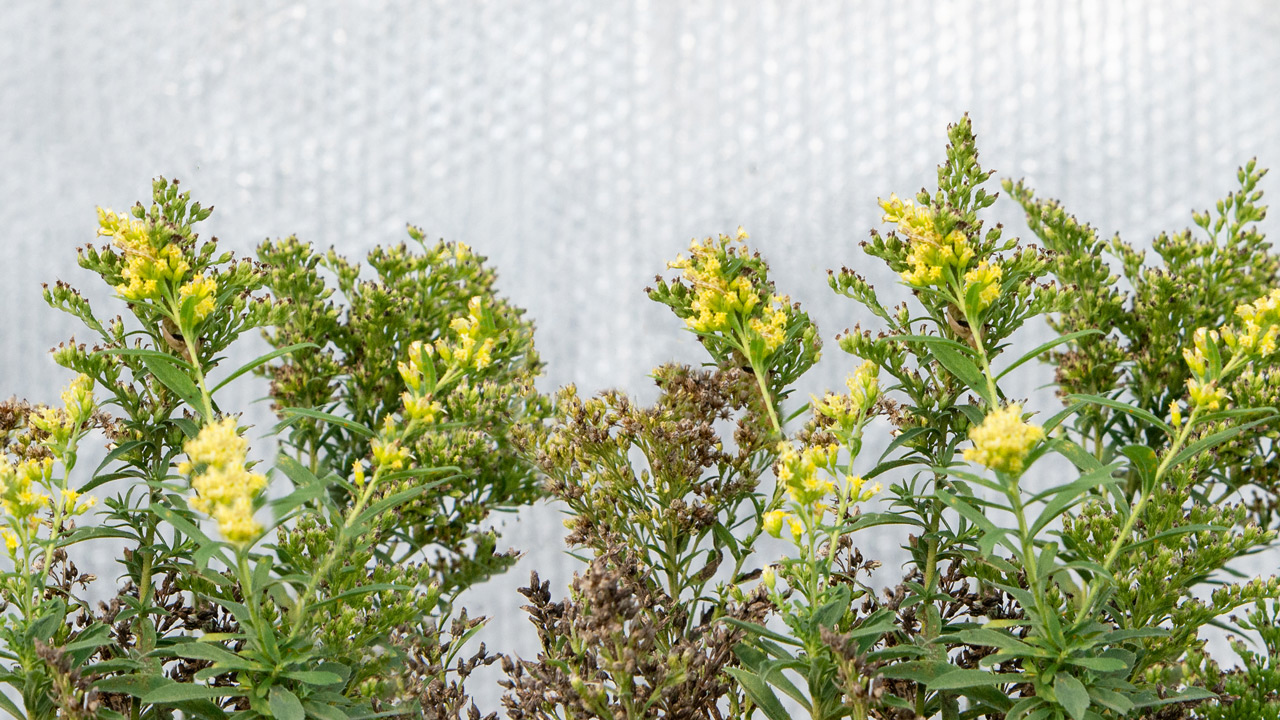
Goldenrod // Solidago
In late summer, tall stems of bright yellow goldenrod appear along roadsides and in fields all throughout Nebraska – making it our much-loved state flower. And after the blooms fade, clouds of fluffy seed heads bring interesting texture to fall and winter landscapes, along with food for native birds. If you want the blooms but wonder how to incorporate their lanky height into your landscape, you’re in luck. With shorter, more compact cultivars such as ‘Fireworks’ and ‘Dansolitlem’ – also called Little Lemon – you can have those cheerful yellow blooms and still keep a tidy garden. And the butterflies and pollinators love them too.
As native plants of the prairie, goldenrods and their various cultivars tend to love the sun and can tolerate a range of soils and moisture levels.
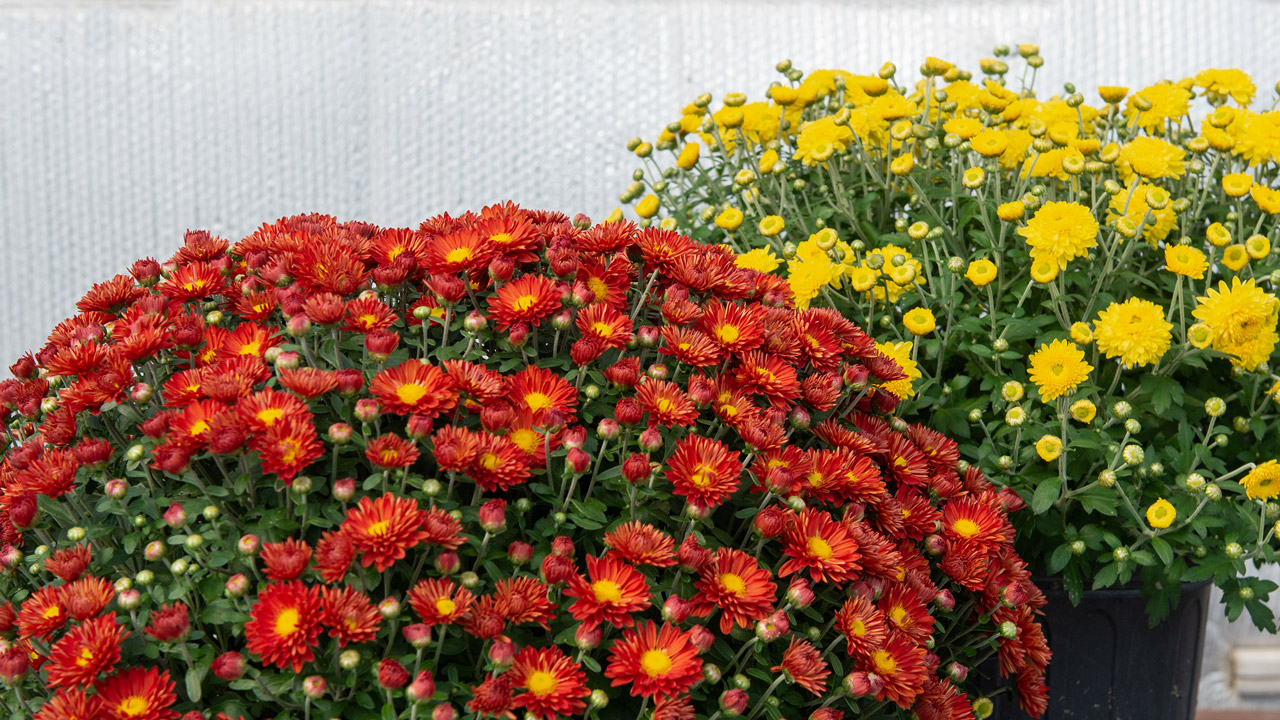
Perennial Mum // Chrysanthemum ‘Igloo’ Series
If you want a mum with a spherical shape and prolific blooms – but with a reliable hardiness for outdoor planting – come check out the ‘Igloo’ series of perennial mums. Even without pinching, mums in the ‘Igloo’ series stay a compact ball of dense lobed foliage covered with those charming mum blooms – even without pinching while they grow. And with red, bright yellow, and bronze-orange cultivars to choose from, your landscape will explode with amazing fall color.
Mums perform their best in full sun with good drainage and moderate soil moisture. No need to pinch these mums while they grow, but you might deadhead spent blooms once in a while to keep them tidy and encourage more flowers.
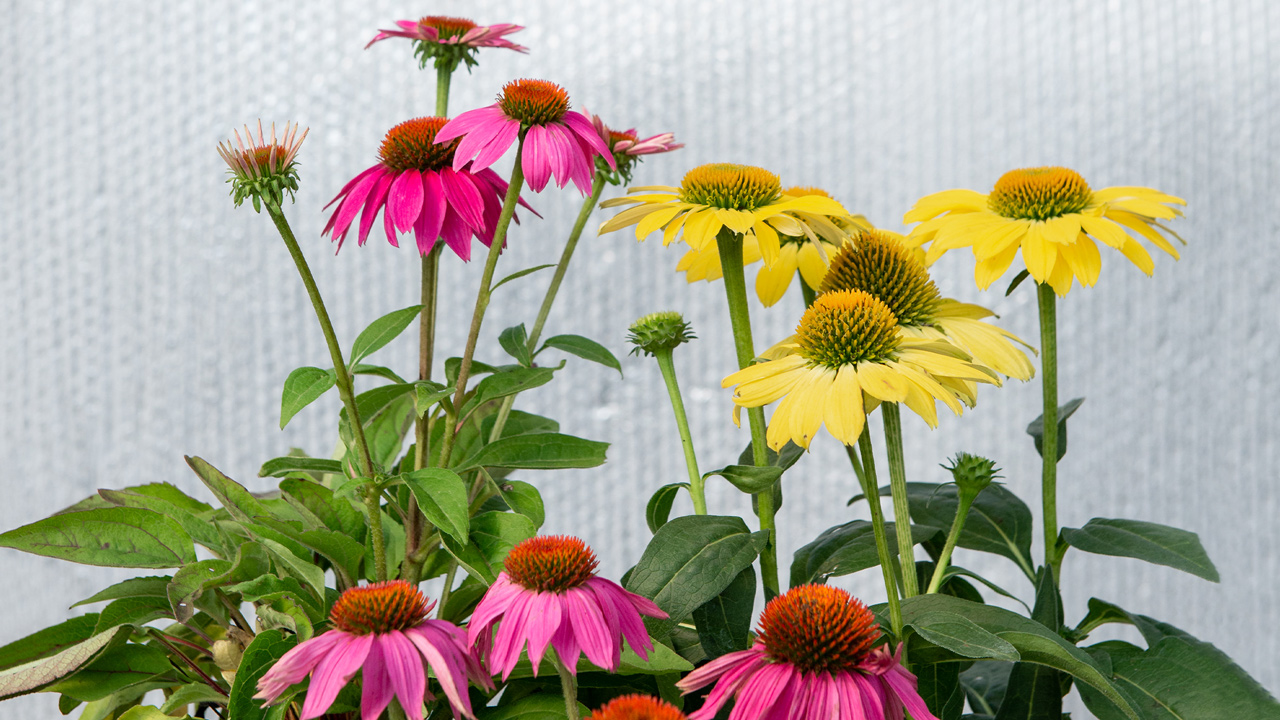
Purple Coneflower // Echinacea purpurea
Although both the common and species names of this prairie native indicate the blooms are purple, recent hybridization has made it so that hue is just one of your many choices. “Purple” coneflowers can now be found in an array of rich shades from tomato red to golden yellow, creamy white, raspberry pink, coral, and pumpkin orange. And if you can’t decide, just take home the cultivar ‘Cheyenne Spirit’ which produces a variety of colors at random on just one plant. Like many summer perennial daisy-like flowers, E. purpurea is a favorite for all kinds of native butterflies, bees, and other pollinators. Purple coneflower’s blooms set atop stiff, hairy stems, and after their color fades, the persistent seed heads add bold texture to the winter landscape and attract hungry birds.
E. purpurea thrives in full sun and rich, well-draining soil. It creates a stunning statement whether planted by itself or in groups, especially in community with other Great Plains favorites like rudbeckia, goldenrod, and native grasses.
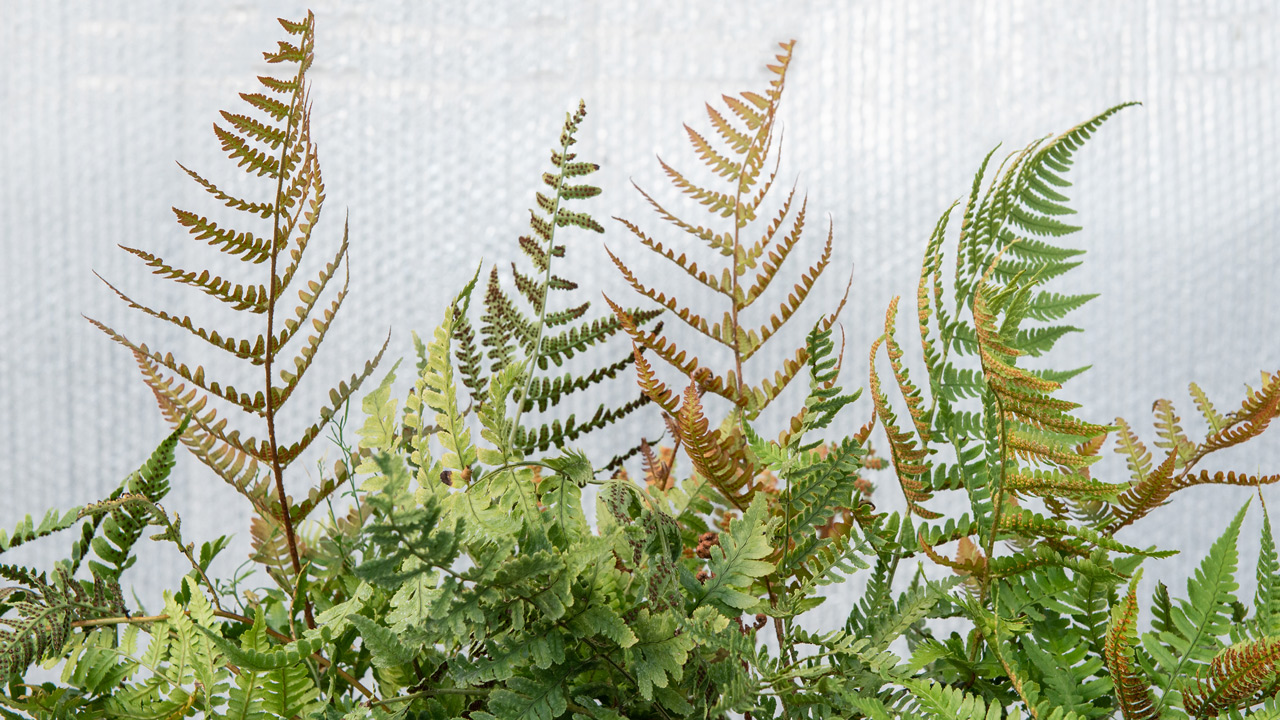
Autumn Fern // Dryopteris erythrosora ‘Brilliance’
A shaded landscape can be just as colorful as a sunny one when you include colorful foliage plants like the autumn fern cultivar ‘Brilliance’ in the mix. In the spring, this fern’s new fronds appear in bright coppery-red shades that mature to deep green as summer arrives. Then in the fall, you get a repeat performance of this red display after first frost. Throughout the growing season, autumn fern’s large triangular fronds provide an interesting woodsy texture to the landscape.
As you might expect with a fern, ‘Brilliance’ prefers partly to fully shaded areas where soil moisture is consistent and plentiful.
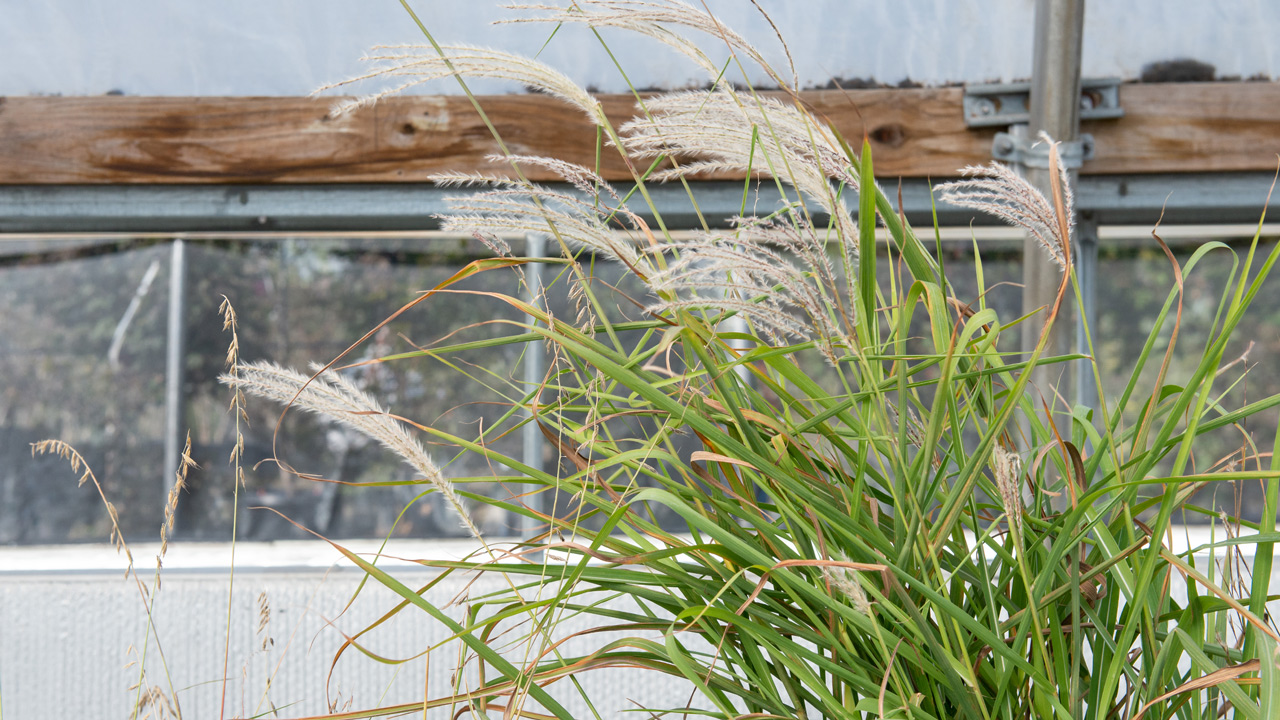
Grasses
Ornamental grasses may not produce the same style of flower that other fall perennials do, but their fascinating seed heads, foliage texture, and near-constant motion in the breeze make them a star of the fall landscape. While most grasses mature into new colors in late summer, Miscanthus ‘Purpurascens’ – also known as flame grass – and the little bluestem cultivar ‘Blaze’ are famous for the rich display of fall color they produce.
In the landscape, most of our native grasses – like big bluestem, sideoats grama, and prairie dropseed – love full sun, and once they’re established, almost never need additional watering from us. Birds love the shelter and seeds that grasses provide in the winter too.
Extend the Season
With the right plants, late summer and fall can be just as beautiful as any other time in the growing season. Stop by the Nursery Yard for some new color. And as always, if you have any questions, just ask! We’ll be glad to show you around and help you find exactly what you need to create a landscape that celebrates the new season.

